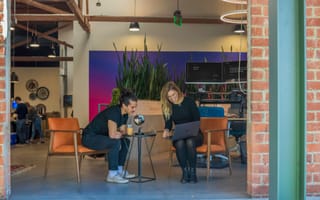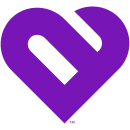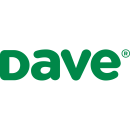Carol Dweck writes in her book “Growth Mindset” that there are two mindsets: “fixed” and “growth.” A “fixed” mindset means the person tells themselves “I am who I am, I cannot change,” where a “growth” mindset gives the person permission to make mistakes, reflect on them and grow.
Distinguishing and dissecting the two mindsets is a frequent conversation topic at online fundraising platform Omaze. As part of their onboarding process, employees are asked to read the book to better foster an environment of self-awareness.
“The book has enabled us to develop a unified language and framework to think about failure, awareness and learning,” Nina Sen, CFO said.
As companies look to foster more inclusive environments, that means addressing uncomfortable and difficult topics and being willing to learn and grow as a team. To start, establish a foundation of a common language and tone. Sometimes, the roadblocks that prevented those conversations are knowing when to start or how to say it. It's also critical that DEI efforts get buy-in from the very top. When leadership makes room for DEI discussions, like organizing a company-wide book club, employees are more willing to speak up.
Books, movie nights, panel discussions, anonymous surveys, DEI groups and unconscious bias training are just some of the ways the four LA companies we spoke to are addressing intersectionality. Read on to learn more.

HR Lead Emily Flinn said DEI-themed months help the employees at WELL Health, a healthcare communications platform, dive into select topics on intersectionality. Movies, lunch and learns and panel discussions open the gateway for deeper conversations.
How does your company approach intersectionality in the workplace, and how does that help shape your broader DEI initiatives?
We have primarily approached intersectionality through our DEI monthly themes. When we are planning activities to go along with our monthly DEI themes, we try to think of different ways intersectionality plays into this. For example, during Pride month we had a lunch discussion after watching films and TV shows with LGBTQ+ themes. Many of these films focused on LGBTQ+ BIPOC. We tried to be mindful of creating experiences that would touch on intersectionality and how the experiences of people can be so different based on the intersection of race and other identities.
In addition to our monthly themes, we have also hosted fireside chats, brought in consultants to speak to us about intersectionality and DEI in general, read books and watched TED Talks together. We’ve done our own research and published newsletters to our internal team, hosted company privilege walks and other experiential activities, and volunteered in Second Chance prison programs. We do all this with the intention of listening, having open conversations and learning from each other. Our goal is create spaces where employees can better understand and see how intersectionality plays a role in the workplace, and our hope is that initiatives like these allow employees to feel known, understood and included, exactly as they are.
One of the key initiatives this team has created for the company is creating DEI awareness months.”
What has been the most impactful action your company has taken to create a more inclusive and equitable work environment?
The DEI team works together to create meaningful ways for our company to engage on topics of diversity, equity and inclusion. One of the key initiatives this team has created for the company is creating DEI awareness months. Every month our company focuses on a different topic. The team started by looking at different holidays and awareness days that fall in each month. These focuses drive the activities planned by the team each month, which include preparing educational slides with quick facts and information during our all team meetings, hosting lunch and learns with thought leaders or having movie clubs to discuss movies based on the topic of the month. These focuses create space as a company to continue to build awareness and educate people about the many different experiences people have. Ultimately, this helps us create a more inclusive environment.
Additionally, we recently recognized two gaps we had in inclusivity: name pronunciation and pronouns. We bridged this gap by creating a directory where employees are able to specify their preferred name, pronunciation of their name, where they are located and topics they are an expert on or are passionate about.
What role do your employees play in leading or supporting DEI efforts? And what have you done to ensure even the most marginalized voices on your team are represented and heard?
We utilize TinyPulse, an anonymous survey tool, to get consistent feedback from all employees. We ask for feedback on all areas of the company and hope that creating an anonymous space allows employees who may otherwise not feel comfortable speaking up to share their thoughts and feedback.
Aside from TinyPulse, we try to gather feedback from specific groups of people. For example, when COVID-19 ramped up and we shut down our offices, we recognized a certain population that was affected in a unique way was the parents of WELL. We made sure to reach out to every parent individually to check in with them and see if there was anything we could do to come alongside them and make a particularly difficult season a little bit easier.

At banking app Dave, intersectionality means making space for everyone to have a voice. Head of Social Impact Lauryn Nwankpa said a diverse culture committee, panel discussions and dedicated Slack channels meant for continuing conversations and sharing resources help employees feel heard and give them an opportunity to connect.
How does your company approach intersectionality in the workplace, and how does that help shape your broader DEI initiatives?
Our DEI initiatives focus on our people and are designed to build an inclusive and welcoming culture and a product that promotes systems of equity in the financial system. We ground our equity and inclusion work in our broader social impact strategy to ensure our progress is comprehensive, sustainable and mission aligned.
We have built many processes to encourage belonging and build the best possible culture for our employees. Our culture committee is a diverse group of employees from across departments that meet biweekly in a safe space to discuss issues impacting Dave culture. We also have created affinity groups to provide spaces to continue ongoing conversations and share resources through Slack channels including #gayves for LGBTQ employees and allies, #ladydaves for women, #blacklivesmatter for sharing resources on the BLM movement, #latinx_at_dave for Latinx employees and #kids for working parents.
It’s critical that we continue building a culture of care, compassion and safety so that those values inform all the work we do, our product, our brand and, ultimately, the impact we can have on our customers. People should feel that they can show up authentically each day, that they are valued and heard.
People should feel that they can show up authentically each day, that they are valued and heard.”
What has been the most impactful action your company has taken to create a more inclusive and equitable work environment?
As a continuation of our Pride celebration, we recently hosted an amazing panel discussion featuring some great LGBTQIA leaders in tech diversity and inclusion to share their professional experiences and talk about intersectionality in life and work. We walked away with many ways that we could promote diversity as employees and members of our communities.
It is incredibly impactful to not only hold space for those who are in different groups but to also open these spaces up to others so they can better understand everyone’s perspective. Holding space for candid conversations on intersectionality and allyship, and having safe and brave spaces and amazing guest speakers opens us up to learning about our responsibility to disrupt a system predicated on inequality and racism.
What role do your employees play in leading or supporting DEI efforts? And what have you done to ensure even the most marginalized voices on your team are represented and heard?
We wanted to make the process of creating our DEI strategy transparent and collaborative. We’ve crafted our approach to diversity, equity and inclusion in partnership with key stakeholders from across the company and solicited feedback from our team through a series of informational and Q&A sessions.

For software and data platform VideoAmp, data is not just for clients. Chief People Officer Marisa Peters said workforce data is shared with employees to ensure transparency. From there, insights from anonymous surveys help leadership foster a diverse culture.
How does your company approach intersectionality in the workplace, and how does that help shape your broader DEI initiatives?
Self-awareness as an organization is the first step for understanding and creating positive change. We share our workforce data with all employees and executive leadership in an effort to be honest and transparent about our existing workforce composition. This data serves as an indicator of areas that need our attention and where we need to do more work in attracting talent that not only further diversifies our workforce but is more representative of our customer base.
As a people team, we focus on actively creating a culture of belonging where people of different orientations, backgrounds and mindsets are able to confidently be themselves in all they do. In order to realize organizational inclusion and equity, we recognize every employee is responsible for fostering a sense of belonging for all and that it’s not just the responsibility of the hiring team or leadership team.
Self-awareness as an organization is the first step for understanding and creating positive change.”
What has been the most impactful action your company has taken to create a more inclusive and equitable work environment?
We are not only committed to keeping a dialogue of inclusion and equity going at VideoAmp; we are also taking bold steps in the development of both analytical and emotional awareness within our workforce. The analytical work is designed to drive measurable and sustainable progress that keeps the organization accountable. It allows us to determine and quantify root causes, not just the outcomes. The emotional work creates the awareness and the context for the analytical work to be successful, making space for all employees to feel heard and valued.
What role do your employees play in leading or supporting DEI efforts? And what have you done to ensure even the most marginalized voices on your team are represented and heard?
We dedicate space for employee-led presentations during our weekly all-hands and have created an employee advisory group (EAG). The EAG meets twice a week and gives people the opportunity to voice concerns, make suggestions and get involved in the activities they feel will make for the most positive growth. The EAG has executive sponsors and team leads at all levels, who promote and encourage authentic, open discussions. This was deliberate in design to make sure we hear from voices throughout the company. In addition to specific workstreams stemming from this group, we make sure all candidates and all employees are aware of our expectations through both the hiring process and multi-channel internal communications.
Being a data and measurement company at the core, we look for signals from multiple data sources to regularly monitor how we’re making progress.
Hearing from our people helps us hold a mirror to ourselves so we can focus on potholes we may need to repair or identify areas with unintended barriers for equity. Fostering and sustaining a culture where people feel they belong is the foundation of all we do to reward, serve and support our Vampers throughout their careers. VideoAmp believes that paradigms must be challenged in the traditional experience people have at work. By doing this for people of all backgrounds, in a consistent way, we live true to our “people first” values and culture.

Uncomfortable conversations are necessary to progress toward growth according to Nina Sen, CFO at online fundraising platform Omaze. The entire workforce recently read “Growth Mindset” by Carol Dweck in order to establish a common language and framework when discussing difficult topics.
How does your company approach intersectionality in the workplace, and how does that help shape your broader DEI initiatives?
Embracing intersectionality is an ongoing process for us. As part of our approach, we use anonymous survey tools to allow individuals to express how they identify at the intersections of the full gender spectrum, sexuality, age, family status, veteran status and disability. This is instrumental in shaping our broader DEI philosophy, by highlighting the fallacy of relying on “box checking” against comparison benchmarks.
For example, Omaze is 57 percent female, a statistic that could be considered “checking the box” on gender diversity. However, an intersectional approach means that our DEI initiatives must go further than that statistic and incorporate deeper feedback from individuals on whether, based on their specific identification, they feel they belong and are valued.
Embracing intersectionality is an ongoing process for us.”
What has been the most impactful action your company has taken to create a more inclusive and equitable work environment?
So much of creating an inclusive work environment is about fostering an environment of self-awareness, being open and willing to have “uncomfortable” conversations, and being very active and intentional in how we grow from them. To prepare for this, we ask everyone who joins the company to read “Growth Mindset” by Carol Dweck. In order to adopt a “growth mindset,” it’s critical to understand one’s own inherent biases. It requires a conscious effort as an individual to evolve beyond a “fixed” mindset to a “growth” mindset, where we give ourselves permission to make mistakes, reflect on them and grow.
The book has enabled us to develop a unified language and framework to think about failure, awareness and learning. This enables us to challenge ourselves to continually iterate and improve. It also builds our individual and collective resilience so we can better support each other along the way.
What role do your employees play in leading or supporting DEI efforts? And what have you done to ensure even the most marginalized voices on your team are represented and heard?
Our DEI efforts must be generated collaboratively, or they won’t be embraced or effective. We have intentionally avoided a committee or an individual leading the effort, as we believe it’s a collective responsibility. We have given the organization three mechanisms to shape and give feedback on our DEI efforts: townhall forums for feedback on proposed initiatives; confidential, detailed surveys at an individual level for anything that is uncomfortable to share publicly; and wellness check-ins by the HR team with everyone at the company. We plan to collect feedback on an ongoing basis and to embed inclusion and belonging questions into our regular team health pulse checks and engagement surveys.










